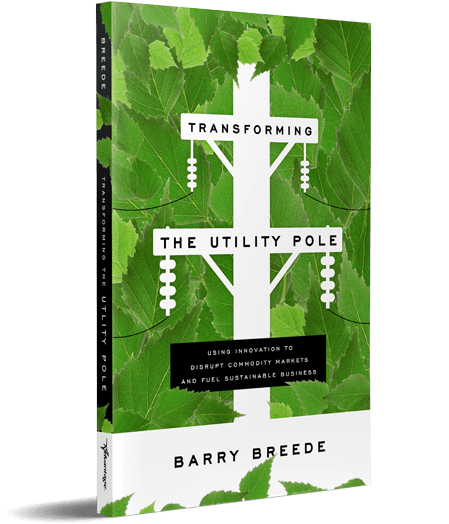Brand differentiation is not common in commodity markets; nor is innovation. What is common is downward pressure on prices; often, for the end user, price is the only differentiator for commodity producers, so the only competition that occurs is a race to the bottom on price.
As in any commodity market, the buyer of utility poles—the employee of a utility who controls which poles are purchased from which vendors—has a lot of power to shape the market. If the buyer only looks at price, then competition keeps happening only on the basis of price; this is how industries fall into the commodity trap. Creative, disruptive innovation is needed to help companies operating in commodity markets escape this trap.
It can be done.
Looking Beyond the Commodity
When it comes to treated wood products, for example, it likely will always be a commodity market. If you put two utility poles produced by two forest products manufacturers next to one another, 99.9 percent of the buyers are unlikely to identify any brand-relevant difference between them.
How then could a commodity product such as the utility pole differentiate itself? The answer is typically not found in the product, but rather in the potential related services that surround the use of the product itself. The challenge becomes helping the buyer understand the value of these services so ultimately they are willing to pay more for your product than competition. Creating services that have recognizable value in the eyes of the buyer requires adopting the mindset of the buyer and understanding what current processes create challenges for them—and therefore represent opportunities for new innovation to occur. For us, a key area of focus was what disposal of the utility pole looks like down the road.
Differentiation Lies in Looking at the Entire Lifecycle
Typically, our buyers don’t spend a lot of time thinking about where the poles come from, and probably no time at all thinking about where a pole is going to go fifty years down the line at the end of its useful life span. The pole is a line item in their budget; apart from due diligence, they will most likely make their purchase decision—based on price. However, it is in their best interest—just as it is in many industries—to understand the product lifecycle and its impact on multiple stakeholders down the road. That is where true differentiation lies—by treating business transactions as a part of an entire process, not just one exchange of product procurement.
In the case of utility poles, it has been our priority to help buyers engage in the supply chain conversation and walk them through what the costs of disposal actually are. At some point, those poles will need to be replaced, to go somewhere—a consideration that is all-too-often dismissed. However, when this challenge is discussed upfront, everyone is aware of critical aspects in the process and why the end of a product’s life is just as important as the procurement of it.
In this industry—as in many others in today’s market—sustainability and a more responsible approach to a product’s life cycle is expected. Beyond the financial benefits, which I’ve discussed in previous articles, commitment to sustainability is a shift that utilities are seriously considering and many are starting to fully embrace. Learn more about implementing innovation in commodity markets and how sustainability initiatives may be one area worthy for you to incorporate into your business by visiting, barrybreede.com.

